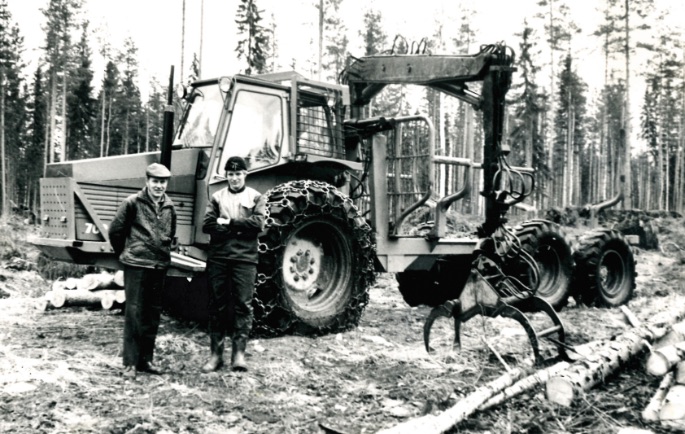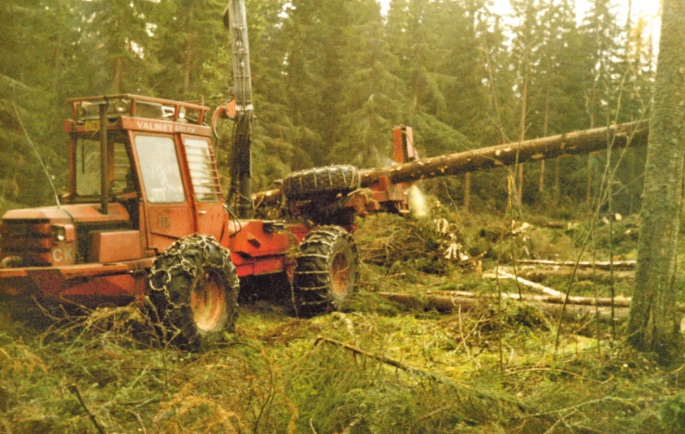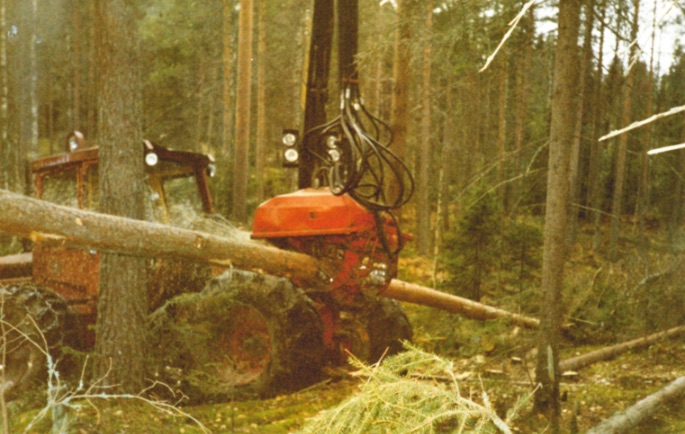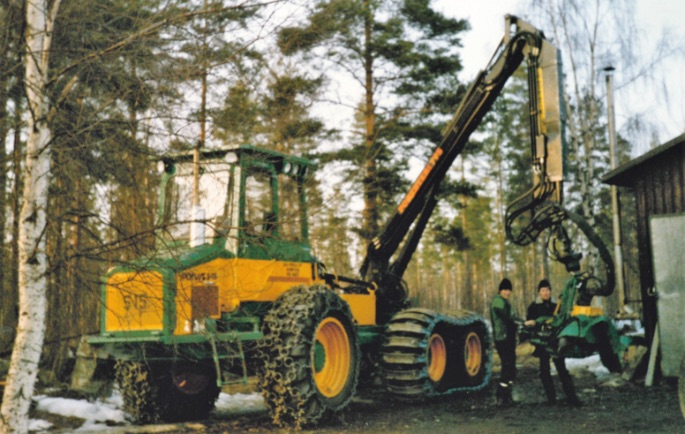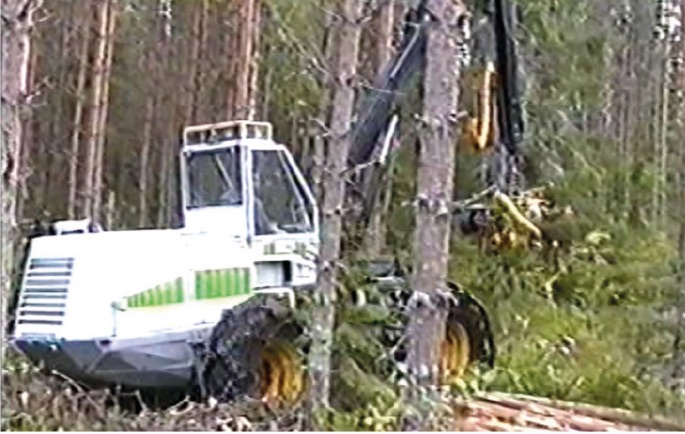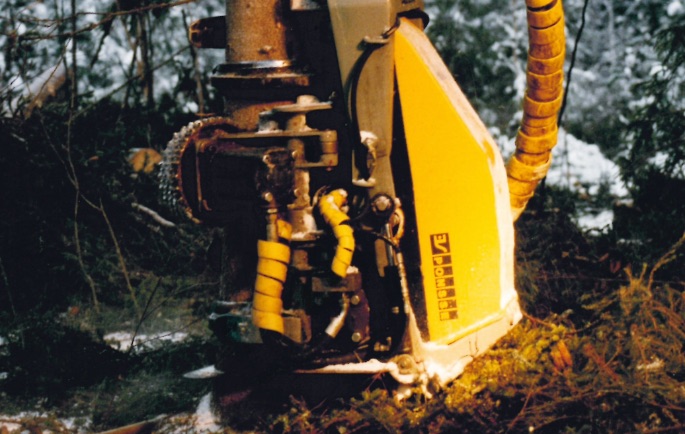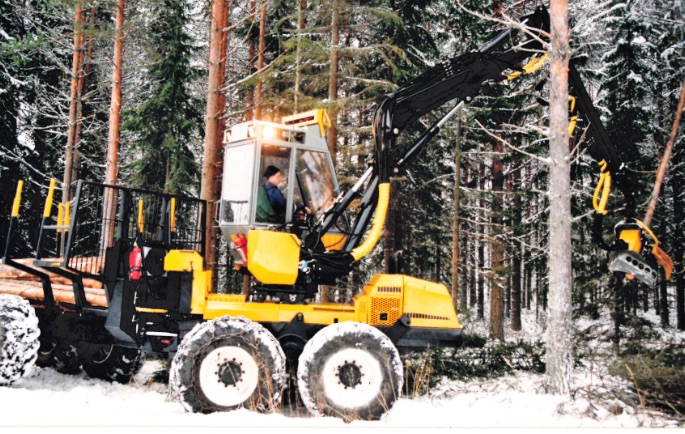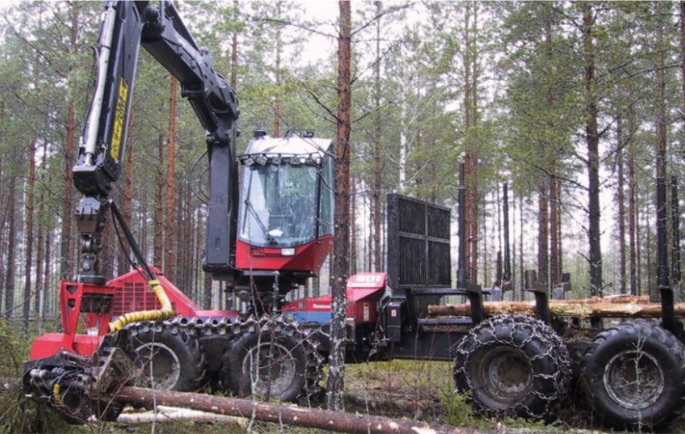1981
The first Nisula processor
Thinking about a harvester
“After the harvesting of the storm damage, there were logs in the surroundings of the Kuorevesi commune, but there was also a shortage of harvesting equipment and foresters. In addition to the occasional extraction job, Seppo and I cut the wood with a chainsaw and then hauled the pieces to the side of the road. But it did not make sense to spend couple of weeks chopping, while the machine was waiting. Later trees were driven into a storage spot in a single day” Ali Nisula remembers.
In 1981, the common solution was to buy a harvester. The problem was similar to when planning to purchase the forwarder. Since there was already some extent of experience and skill of machine building, the brothers decided to make the harvester themselves. Those days it was still an era of processing, i.e., the foresters fell the trees, and the processor part just delimbed and cut the trunks. For making the processor, they went to check out the existing equipment at work. Solutions regarding hydraulics were inquired from the Aliranta brothers, but their schematics seemed too complicated.
The Nisula brothers decided to make the tail forwarder as simple as possible. They bought a Valmet 870CK, whose bogie and bunk had been removed. Next they made a sub frame to which a Granab 5010 crane was mounted. Then the processor part was made as an extension of the sub frame. After that only the delimbing knives, feed rollers and cutting saw were needed to create – or at least so they thought, based on their visit to see the factory-made forwarders at work. There were, however, more challenges involved due the brothers did not have any experience of similar mechanic constructions. In the processor section, wheels of a crane truck with diameter of 1.3 m were used as feeders and Sisu’s 2.8-liter crank motors were used as their feeding motors. So without a doubt, there was delimbing power quite enough.
Right from the beginning, there was a lenght measuring device integrated into the machine, which was truly precise. Thanks to this, the Nisulas were able to provide fixed-size logs for sawmills in the neighbourhood. The measuring device was created by a young, self-taught electronics wizard Matti Pietilä, who also built some automated functions into it in order to speed up the work.
